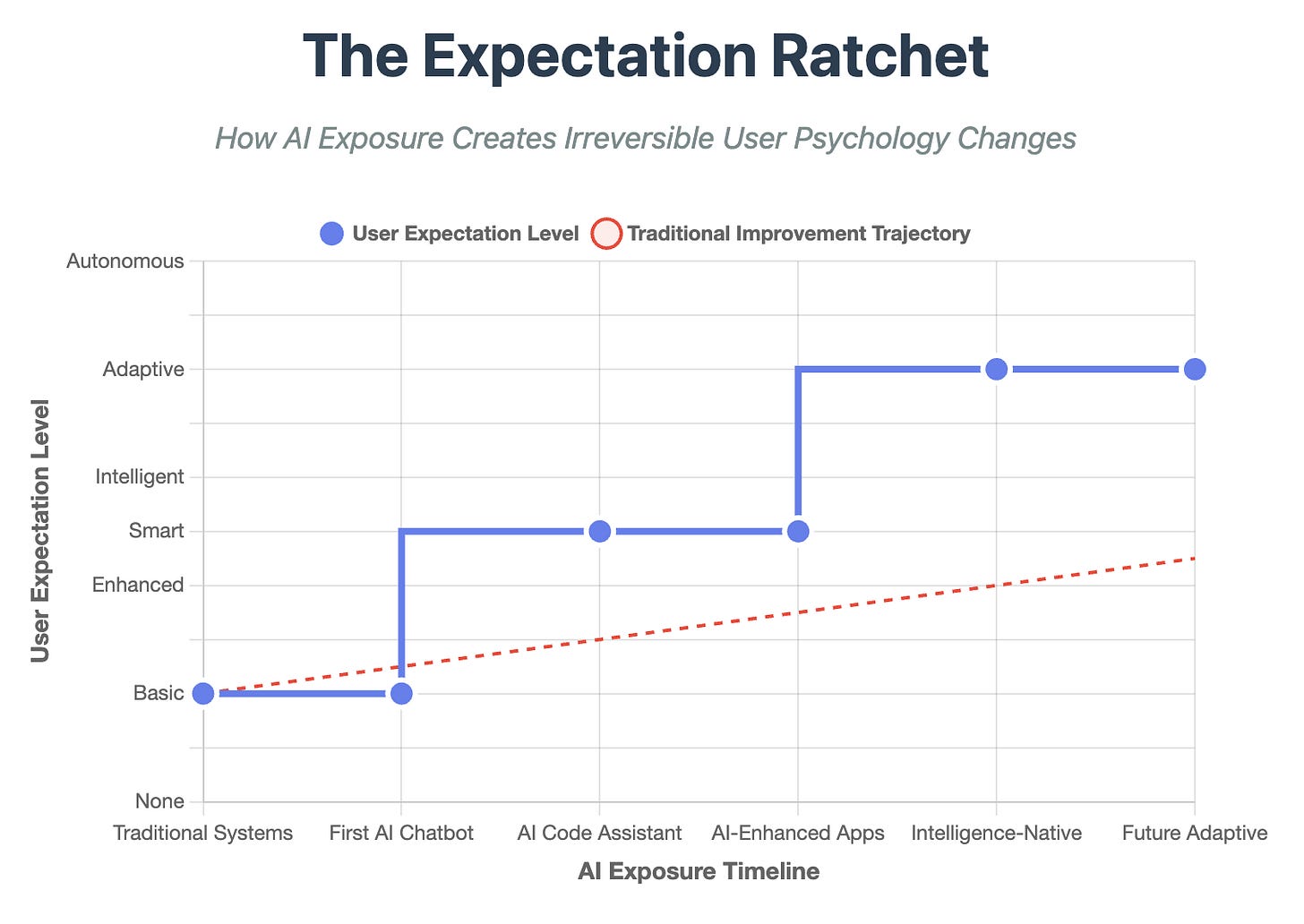The End of Learning Tools: How AI Eliminates the Knowledge Gap in Professional Software
Collaborative Software: The Next Competitive Battleground for Professional Tools
The Foundation: Understanding the Knowledge Gap That Drives Tool Evolution
Professional software has followed the same evolutionary pattern across every domain since the digital age began. To understand why this pattern repeats so predictably, we need to examine the fundamental force that drives it: the knowledge gap between what users want to accomplish and what they need to learn about tools to accomplish it.
Think about transportation for a moment. Learning to drive requires bridging a substantial knowledge gap covering vehicle operation, traffic laws, and navigation skills before you can get from point A to point B. Ride-sharing eliminates this gap entirely. You express your destination while an expert handles all the technical execution. This same dynamic drives professional tool evolution, but with far greater complexity and consequence.
This knowledge gap creates architectural pressure that leads to three distinct evolutionary eras:
Era 1: Knowledge Gap Acceptance
Mastering photoshop meant mastering the technical aspects of the tool as well.These tools assume users will bridge enormous learning gaps through extensive training. Adobe Photoshop in the 1990s required months of learning layers, blend modes, and color spaces before creating professional results. Video editing demanded mastering timelines and codecs, data analysis required SQL and statistical software, web development necessitated programming multiple languages. Era 1 tools created distinct populations of operators who could manipulate the machinery and consumers who could not access capabilities directly.
Era 2: Knowledge Gap Reduction
These tools preserve underlying power while providing frameworks that help users bridge knowledge gaps more efficiently. Photoshop evolved to include templates and guided workflows, Tableau simplified data visualization, WordPress reduced web development complexity through visual interfaces. Era 2 tools still required significant learning investment but provided structured pathways to professional capabilities.
Era 3: Knowledge Gap Elimination
These tools understand human intent expressed in natural language and translate it directly into professional execution. GitHub Copilot allows developers to describe functionality and receive working code, Canva eliminated design theory requirements by embedding those principles into automated workflows. Most dramatically, conversational AI platforms allow users to create sophisticated applications through conversation alone.
This evolutionary progression accelerates when market demand expands beyond traditional user populations. When more people need a tool's output than are willing to bridge substantial knowledge gaps through learning, conditions become optimal for architectural transformation. The pattern operates independently of specific technologies because it addresses fundamental human factors in how people relate to complex computational capabilities.
The Evidence: Platform-Level Validation of Knowledge Gap Elimination
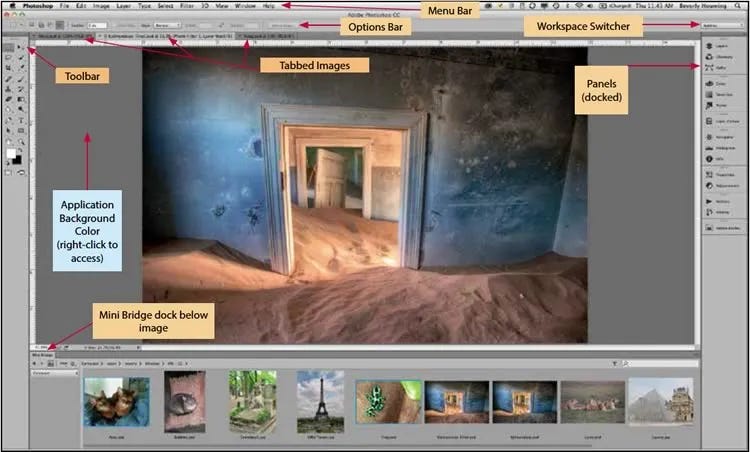
Canva provides the clearest validation of Era 3 transition within a single domain. Traditional design software exemplified Era 1 knowledge gap acceptance - users faced enormous learning requirements covering typography, color theory, and interface mechanics before producing professional output. The knowledge gap was so substantial that "learning Photoshop" became a distinct professional skill separate from creative thinking.
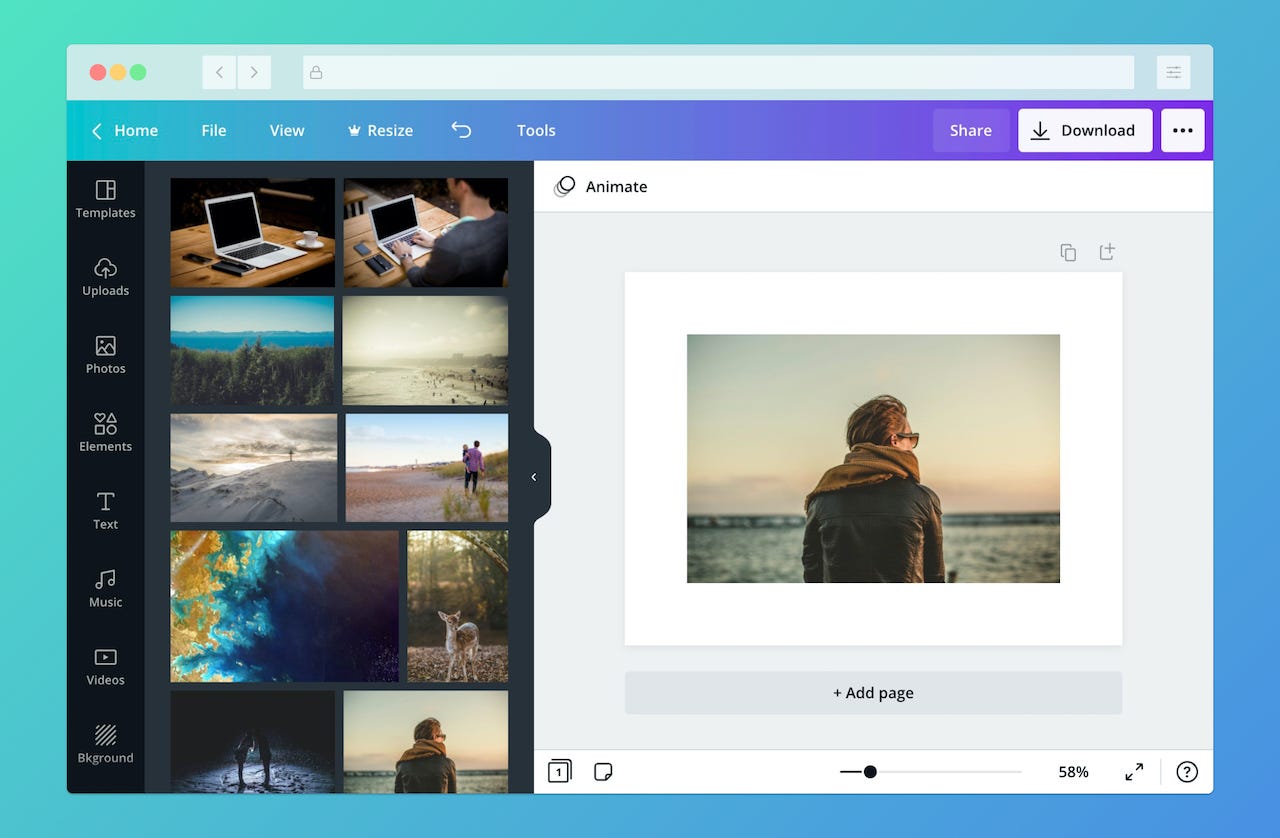
Canva demonstrated knowledge gap elimination by embedding design expertise directly into platform architecture. Instead of requiring users to master design theory and software operation, Canva made intelligent systems responsible for applying professional design principles automatically. Users could focus on content and messaging while the platform handled technical execution. This architectural breakthrough recognized that most users needed effective visual communication rather than maximum creative control, expanding the addressable market from trained designers to anyone needing visual content.
However, the most compelling evidence emerges from conversational AI platforms that implement knowledge gap elimination across multiple domains simultaneously. Claude's artifacts system and ChatGPT's Canvas represent the "conversation + canvas" paradigm in its purest form. Users express professional intent through natural language and receive immediate, functional results without bridging traditional knowledge gaps.
Someone can request "create a data visualization showing quarterly sales trends" and observe a working chart appear instantly, then refine through continued conversation: "make the colors more vibrant," "add a trend line," "format this as a presentation slide." The same conversational approach enables software development, document creation, and analytical modeling across domains.
These platforms validate Era 3 predictions by demonstrating immediate expert mode across multiple professional capabilities. Business analysts create sophisticated dashboards without learning business intelligence software, content creators build interactive presentations without mastering design applications, writers generate complex technical documentation without understanding markup languages. Users achieve productive results from first interaction because the platform adapts to their expertise level and intent rather than requiring tool mastery.
Perhaps most significantly, these platforms prove knowledge gap elimination creates the expectation ratchet effect. Users who experience conversational professional capability creation develop immediate recognition that traditional tool mastery represents unnecessary barriers rather than fundamental requirements, creating competitive pressure that drives transformation across all professional tool categories.
The Mechanism: Intelligence as Knowledge Gap Bridge
Current developments in artificial intelligence represent Era 3 in action, with a crucial distinction that transforms professional tool possibilities. Rather than simply reducing knowledge gaps like Era 2 tools, intelligence eliminates them entirely by making AI responsible for bridging the distance between user intent and technical execution.
Software development illustrates this transformation clearly. Traditional programming exemplified Era 1 thinking - developers needed to bridge vast gaps between business logic and computational execution by learning programming languages, frameworks, and deployment systems. Someone wanting to create a user authentication system faced months of learning before writing functional code.
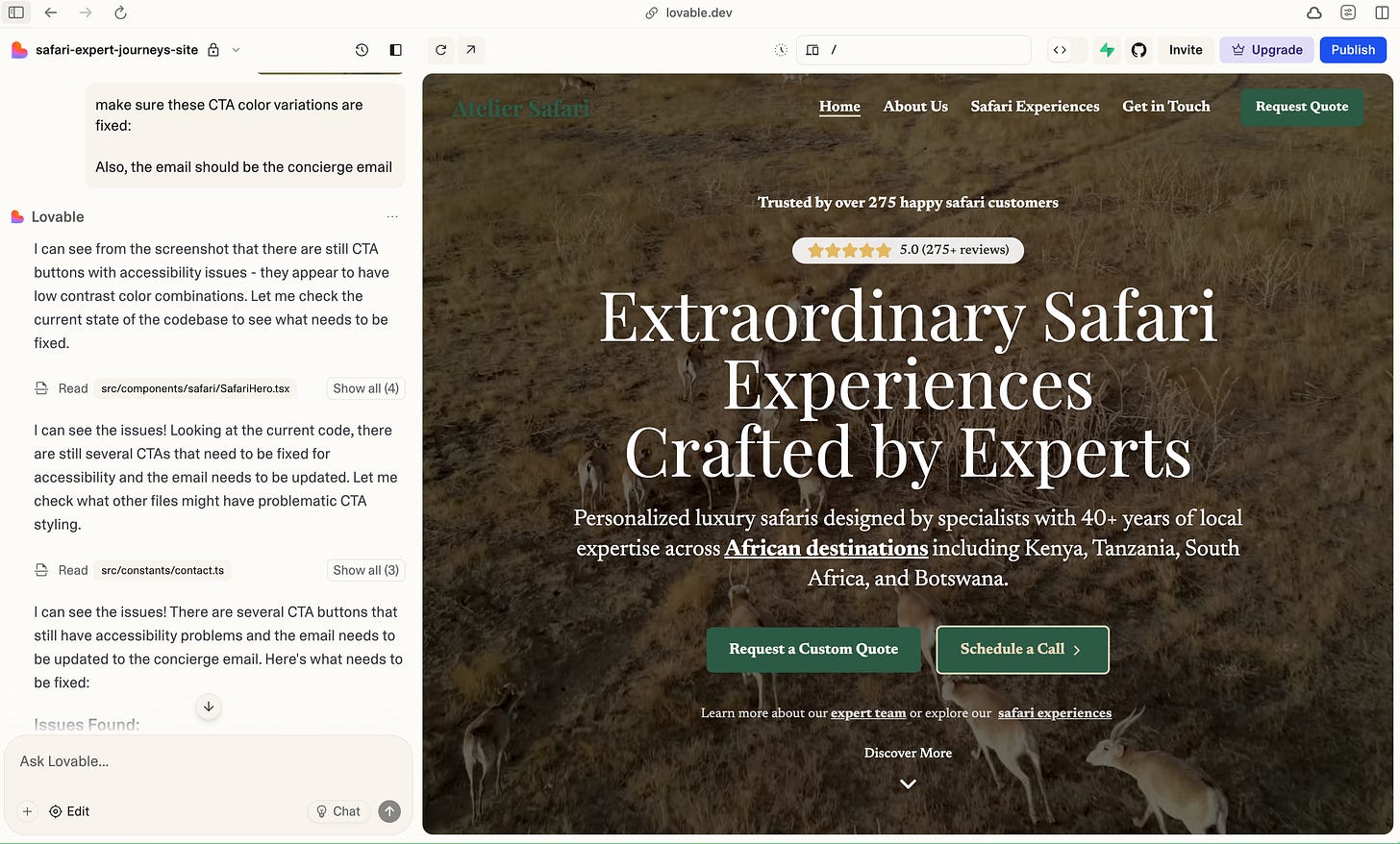
AI-powered coding assistants like GitHub Copilot, Cursor, and platforms like Lovable represent knowledge gap elimination in action. These tools understand intent expressed in natural language and engage in iterative refinement through conversation. A developer can describe "create a user authentication system with email verification" and receive working code without bridging traditional knowledge gaps manually.
The transformation extends to collaborative iteration. Developers refine outputs through continued conversation without returning to traditional syntax manipulation: "make the password requirements more strict," "add social login options," "improve the error messaging." Each request generates immediate updates, allowing iteration through natural language rather than computational thinking.
This represents the conversation plus canvas paradigm that defines Era 3 tools across all domains. Users express intent through natural language while receiving immediate visual feedback in working implementations. The development environment becomes a canvas that displays functional results instantly, providing value from first interaction while supporting refinement through continued collaboration.
The broader principle emerges clearly: when artificial intelligence can bridge knowledge gaps automatically, it fundamentally changes who can access professional capabilities and how quickly they can achieve productive results. The same pattern that transforms software development applies across every professional domain because all professional tools face the challenge of helping users bridge the distance between intent and execution.
The Impact: Measurable Effects of Knowledge Gap Elimination
Knowledge gap elimination creates measurable effects that extend far beyond individual productivity improvements. When we examine user responses to conversation plus canvas interfaces, we observe the democratization multiplier effect operating in real-time across multiple professional domains.
Intelligence-native platforms eliminate barriers by understanding professional intent expressed in natural language. Through conversational AI systems, users describe complex requirements and receive working implementations that accomplish their goals without conceptual translation between human thinking and computational execution. A marketing manager can request automated reporting systems and receive complete applications, a researcher can ask for statistical analysis and receive comprehensive visualizations, a business analyst can specify interactive dashboards and observe them generated dynamically.
My previous article explains the fundamental principles and patterns shaping the current AI market, it is an essential read:
Why Every Startup Will Rebuild Their Stack in the Next 24 Months (And Why the Winners Are Already Starting)
The Clayton Christensen Moment: When "Good Enough" Becomes "Completely Wrong"
Users who experience AI-enhanced interfaces undergo a cognitive threshold crossing, developing new expectations about reasonable effort in achieving professional goals. Once someone has used conversational interfaces that generate working applications from natural language descriptions, returning to traditional tool mastery feels unnecessarily burdensome.
This creates a one-way ratchet in user expectations that operates across all professional domains. People who have experienced intelligent, conversational professional tools cannot easily accept less responsive interfaces. They begin expecting all professional software to understand their intent and engage in iterative improvement through natural language interaction.
We can measure time-to-value improvement in orders of magnitude rather than incremental percentages. Traditional data analysis might require weeks of training before producing meaningful insights, while conversation plus canvas approaches enable professional-quality output within minutes of first use. This represents fundamental restructuring of how professional capabilities can be accessed and developed.
The market expansion potential becomes enormous when professional tools can serve anyone who needs their output rather than only those willing to master their operation. When barriers between intent and execution drop dramatically, users explore ideas they might never have pursued through traditional interfaces, iterate more rapidly, and achieve results that would have required significantly more technical expertise using conventional tools.
The Implementation: Strategic Choices in the Intelligence-Native Future
Companies building professional tools today face strategic decisions that will determine competitive positioning throughout the next business cycle. The emergence of conversation plus canvas platforms creates new competitive dynamics while providing clear evidence of user expectation evolution that cannot be ignored.
Companies can choose between three primary strategies: retrofitting existing architectures with AI features, rebuilding around intelligence-native collaboration from first principles, or integrating with platform-level conversation plus canvas systems that already provide this infrastructure.
The retrofit approach offers short-term advantages for established companies. Adobe has been adding AI features to Creative Cloud applications, Microsoft has integrated Copilot into development tools. These companies can leverage existing user bases while gradually introducing conversational capabilities. However, this approach often produces tools that feel like traditional interfaces with AI additions rather than truly collaborative environments, combining the complexity of traditional tools with new AI interaction learning curves.
The rebuild approach requires more significant investment but offers potential for genuinely differentiated user experiences. Companies like Cursor have built development environments specifically around AI collaboration from first principles, creating interfaces where every interaction assumes intelligent understanding of user intent. These companies can design every aspect of their platforms around intelligent collaboration, creating cohesive experiences that retrofitted tools cannot match.
Intelligence-native tools compete on entirely different dimensions than traditional professional software. Where traditional tools compete on feature completeness and performance optimization, intelligence-native platforms compete primarily on the quality of collaboration between human intent and AI execution. This creates new competitive advantages based on training data quality, model sophistication, and understanding of domain-specific workflows rather than interface design or feature development.
Better understanding of user intent, domain knowledge, and workflow patterns benefits users exponentially rather than linearly. Each user interaction teaches the system something that can improve collaborative capabilities for all users working on similar problems, creating sustainable competitive advantages that become stronger over time.
Creating successful intelligence-native professional tools requires solving design challenges that do not exist in traditional software development. The primary challenge involves creating interfaces that support both natural language interaction and precise control over outputs when users need it. The technical architecture must support collaborative iteration, where users provide feedback on AI-generated outputs and observe the system incorporate that feedback intelligently through demonstration rather than explicit specification.
The Vision: Professional Work Redefined Around Collaboration
The evolution toward intelligence-native professional tools signals a fundamental shift in how humans will interact with complex capabilities in digital environments. Instead of mastering tools, professionals will increasingly focus on directing intelligent collaborators that understand their domains and can execute their intentions.
This transformation will affect every knowledge-based profession, following patterns already observable in software development. Lawyers will collaborate with AI that understands legal reasoning and can draft documents, research precedents, and analyze cases. Doctors will work with AI that can interpret symptoms, suggest diagnoses, and recommend treatments while maintaining human oversight. Financial analysts will direct AI collaborators that can model scenarios, identify trends, and generate insights from vast datasets.
The change extends beyond individual productivity improvements to reshape entire professional workflows. When AI can handle routine execution tasks that currently require mastering complex software, human professionals can focus on higher-level strategy, creative problem-solving, and interpersonal aspects of their work that require uniquely human capabilities.
The convergence of user expectation evolution, technological capability advancement, and market demand expansion creates conditions for transformation that may prove as significant as the original digitization of professional work. Companies that recognize this pattern and build accordingly will define how humans collaborate with intelligent systems across every domain of professional activity.
The architectural transformation from complexity to collaboration through intelligence represents not just the next phase of tool evolution, but the emergence of an entirely new category of human-machine interaction that will reshape professional capability across every domain of knowledge work.
Real-Time Validation: The Artifacts Marketplace as Evidence in Motion
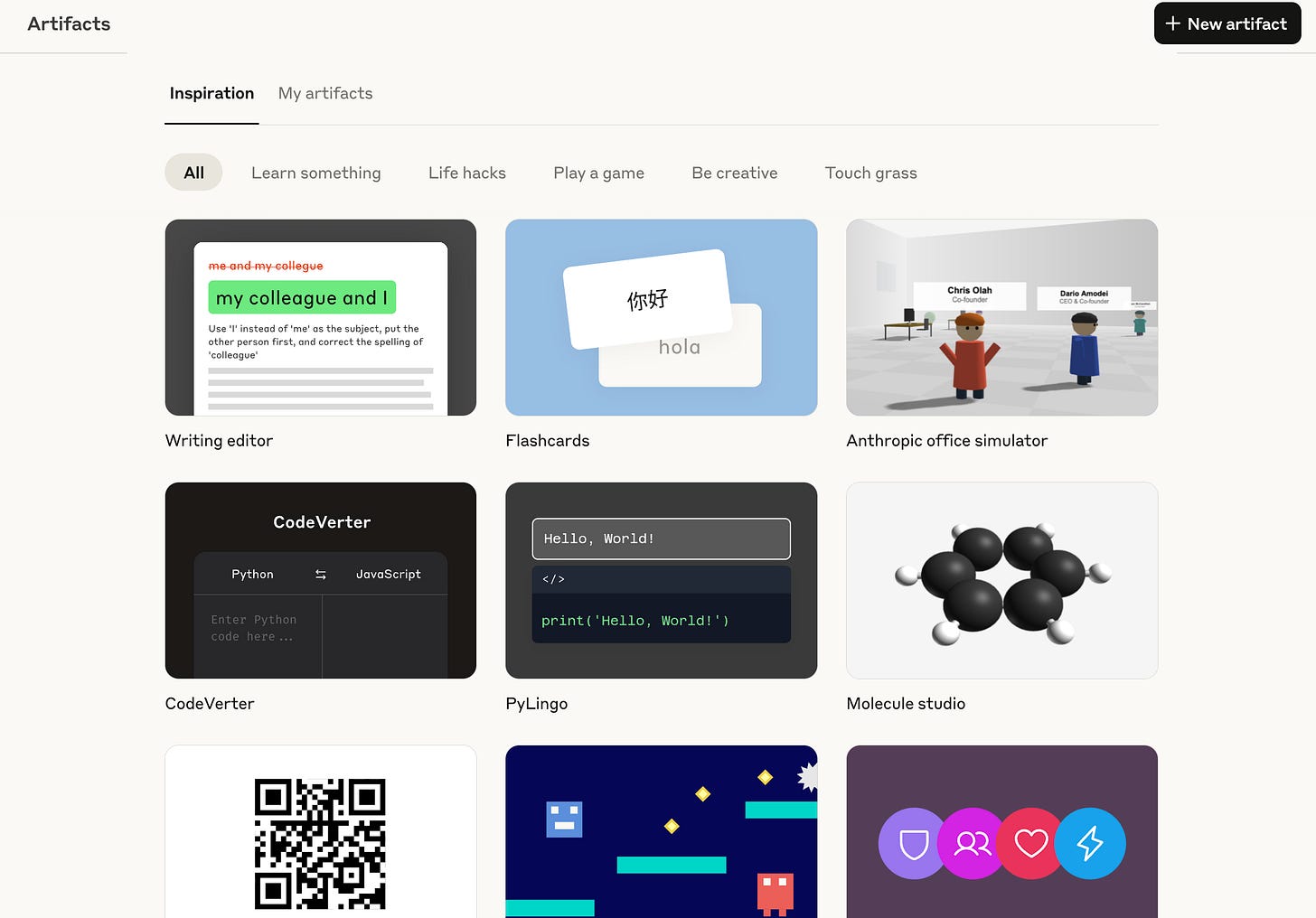
The most dramatic validation of this pattern emerged even as this analysis was being written. Claude's release of an artifacts marketplace demonstrates Era 3 knowledge gap elimination at unprecedented scale, providing real-time evidence of the architectural transformation in action.
The marketplace enables users to create and share functional applications, educational tools, games, and utilities through conversation alone. Examining the diversity of creations reveals the profound implications: users have built molecule visualization tools, language learning flashcard systems, code conversion utilities, interactive simulations, and sophisticated games without bridging any traditional development knowledge gaps. Someone can conceive of a tool they need, describe it conversationally, and watch it become a functional application that others can discover and use.
This development validates the democratization multiplier effect operating at platform scale. Traditional software development confined tool creation to specialist populations willing to master programming languages, development frameworks, and deployment systems. The marketplace transforms anyone with creative intent into a potential tool creator, expanding the addressable market from thousands of developers to millions of people with ideas but no technical training.
More significantly, the marketplace proves that conversation plus canvas platforms create entirely new categories of creation and collaboration rather than simply improving existing workflows. Users transition from tool consumers to tool creators without learning computational thinking or interface mechanics. The knowledge gap that traditionally separated those who could build software from those who could only use it disappears entirely through conversational interaction with intelligent systems.
The marketplace also demonstrates the network effects that characterize intelligence-native platforms. Each user creation adds value for all other users, while simultaneously teaching the system about new use cases and interaction patterns. This creates competitive advantages that strengthen over time rather than weaken, representing a fundamental departure from traditional software development economics where individual tools compete for market share.
Perhaps most importantly, this development accelerates the expectation ratchet effect across professional domains. Users who experience creating functional applications through conversation will naturally expect similar capabilities from traditional development environments, design software, and other professional tools. The marketplace provides concrete evidence that knowledge gap elimination enables professional-level creation without traditional learning requirements, making conventional tool complexity appear unnecessarily burdensome rather than technically necessary.
This marketplace launch transforms the conversation plus canvas paradigm from emerging possibility to operational reality, providing a template for understanding how intelligence-native approaches will reshape professional capability creation across every domain of knowledge work.
My next post will cover how the cost of software development has decreased so significantly due to AI that it will enable a massive unlock in new micro apps generated. Apps nobody ever thought to create because they would not be economically viable in the prior era of software development. This will unlock unprecedented use cases and ideas for software, similar to the rollout of the app store, while creating a whole new “discovery” problem.









